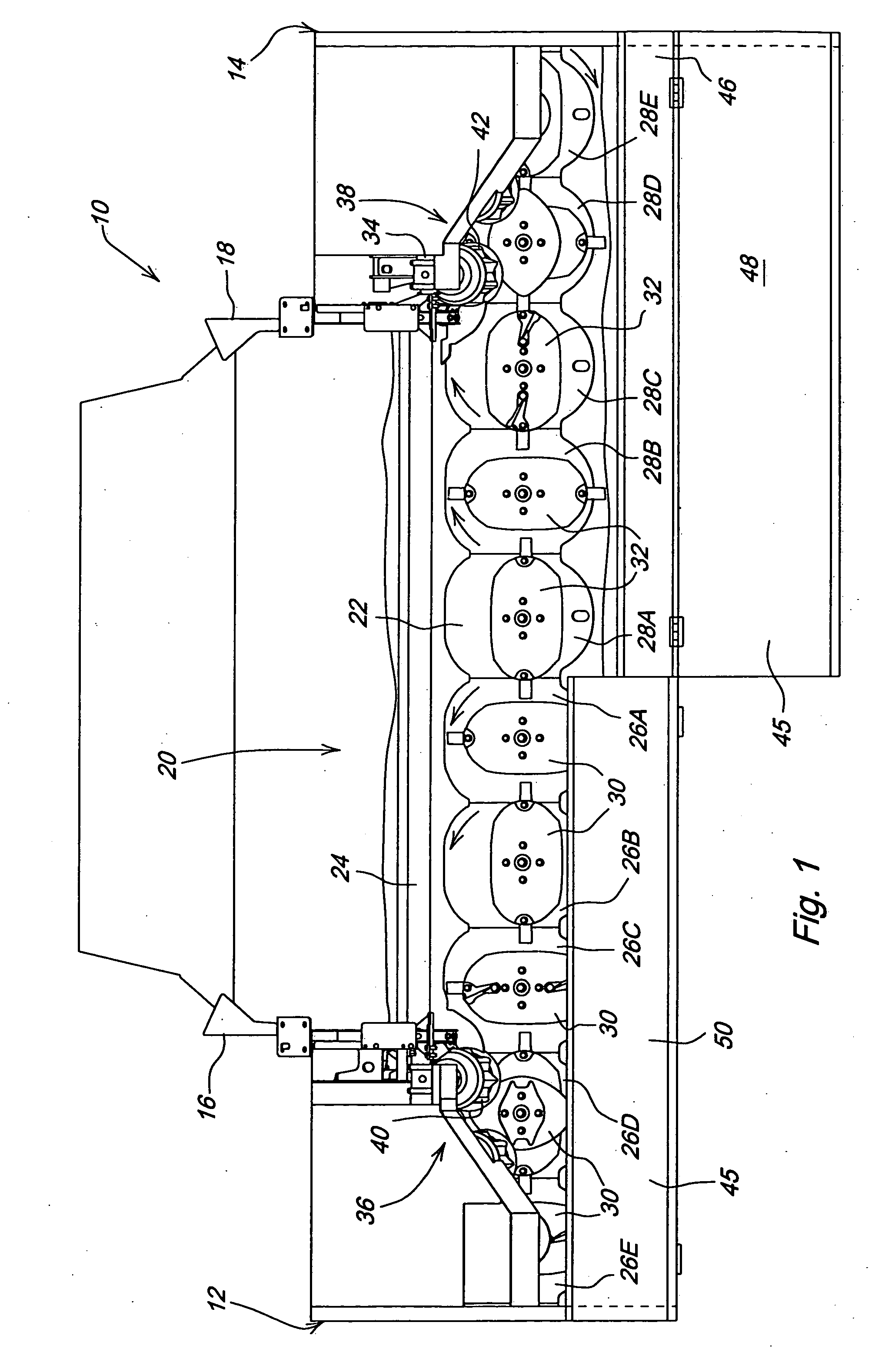Specialty crop knockdown shield for rotary platforms
a shield and crop technology, applied in the field of special crop knockdown shields for rotary platforms, can solve the problems of high grain loss, not working well for specialty crops such as grass seed, and rotary platforms have not traditionally been accepted for grass seed applications, so as to reduce the shield, minimize the shattering of seeds, and improve the effect of visibility
- Summary
- Abstract
- Description
- Claims
- Application Information
AI Technical Summary
Benefits of technology
Problems solved by technology
Method used
Image
Examples
Embodiment Construction
[0015] With reference now to the drawings it can be seen that a rotary platform is designated generally by the numeral 10. As shown the rotary platform 10 includes a body defined by right- and left-hand sidewalls 12 and 14, respectively. Right- and left-hand upright transverse walls or bulkheads (not visible), respectively, extend inwardly from the sidewalls 12 and 14 and terminate at forward ends of right- and left-hand, fore-and-aft extending inner sidewalls 16 and 18 that define a crop passage 20 located centrally between the sidewalls 12 and 14.
[0016] An elongate rotary cutterbar 22 extends transversely between the sidewalls 12 and 14. Extending the length of and defining a rear portion of the cutterbar 22 is a tubular stiffener beam 24 of square cross section that is bolted to lower portions of the lower vertical sections, respectively of the transverse walls.
[0017] A plurality of cutting units 26 and 28 respectively include cutter discs 30 and 32. The inner sidewalls 16 and ...
PUM
 Login to View More
Login to View More Abstract
Description
Claims
Application Information
 Login to View More
Login to View More - R&D
- Intellectual Property
- Life Sciences
- Materials
- Tech Scout
- Unparalleled Data Quality
- Higher Quality Content
- 60% Fewer Hallucinations
Browse by: Latest US Patents, China's latest patents, Technical Efficacy Thesaurus, Application Domain, Technology Topic, Popular Technical Reports.
© 2025 PatSnap. All rights reserved.Legal|Privacy policy|Modern Slavery Act Transparency Statement|Sitemap|About US| Contact US: help@patsnap.com



